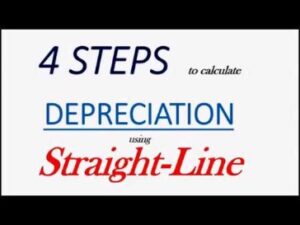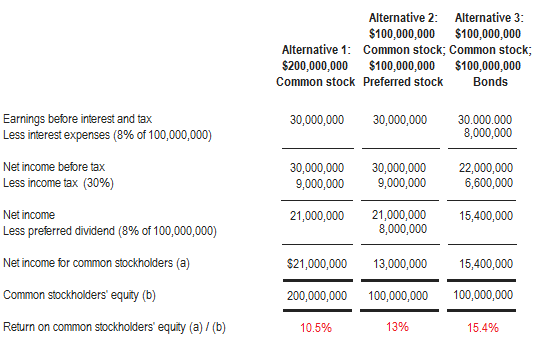
After making these individual adjustments, it’s essential to reconcile the payroll records with the amounts owed to avoid any discrepancies. Take control of your payroll liabilities in QuickBooks Online and enjoy the peace of mind that comes with accurate financial record-keeping. With the ability to make adjustments when needed, you can maintain the financial health of your business and compensation confidently navigate the payroll landscape. This reconciliation ensures that the revised liabilities are accurately entered into QuickBooks Online, maintaining the integrity of the payroll system and financial compliance. You can adjust more than one liability at a time during one liability adjustment transaction by selecting the payroll items in the payroll item column provided.
By dedicating time to review and verify the adjustments, you can be confident that your payroll liabilities are accurately reflected in QuickBooks Online. This step ensures the integrity of your financial records and reduces the risk of errors or discrepancies. Following the setup adjustments, it is crucial to review and modify individual employee payroll records within QuickBooks Online, ensuring that the recalculated liabilities and taxes accurately reflect the changes made to the overall payroll setup. Subsequently, it is essential to navigate to the payroll setup within QuickBooks Online and implement the required changes, which may involve modifying tax categories, updating withholding rates, or adjusting employer contribution parameters. Following the setup adjustments, it is crucial to review and modify individual employee payroll records within QuickBooks, ensuring that the recalculated liabilities and taxes accurately reflect the changes made to the overall payroll setup.
Make instalment payments for payroll liabilities
This recalibration process involves carefully reviewing the previous calculations, identifying any discrepancies or errors, and then correcting these figures to reflect the accurate tax withholdings and liabilities. Once the incorrect amounts are identified, the next step is to zero them out and reconcile the adjusted figures with the company’s financial records. This process involves carefully examining each employee’s pay rate, deductions, benefits, and any other relevant information to ensure that their records are updated with the correct information.
- If the adjustment will impact or change the data on your quarterly return, you might consider doing a quarter-to-date adjustment instead of a year-to-date adjustment.
- This meticulous process helps maintain accurate and compliant payroll records for the organization.
- If you are an employer who has overpaid payroll tax liabilities using QuickBooks, then you might want to get the overpaid amount credited as your payroll tax liabilities and get this over payment adjusted in QuickBooks Company file.
- This step ensures the integrity of your financial records and reduces the risk of errors or discrepancies.
- By carefully reviewing your payroll reports, identifying any errors or omissions, considering changes in employee benefits, and accounting for payroll adjustments, you will have a clear understanding of the adjustments required.
Adjust payroll liabilities for the employee
Once you’ve found its cause, you can follow the specific steps for your situation in our Scheduled liabilities payroll show as overdue or in red article. I understand that you’ll want to ensure you’re recording your previous tax payments correctly. If you use QuickBooks Desktop Payroll Assisted, contact us if you need to make an adjustment for a previously filed tax form or payment. Most businesses must submit their last month’s payroll deductions to the Canada Revenue Agency (CRA) by the 15th of the current month. If you’re still having issues with these liabilities after trying the recommendations from my colleague, then I suggest contacting our Customer Support Team.

This method offers flexibility and precision in making adjustments, ensuring that your financial records accurately reflect the necessary changes. By carefully reviewing your payroll reports, identifying any errors or omissions, considering changes in employee benefits, and accounting for payroll adjustments, you will have a clear understanding of the adjustments required. These adjustments will form the basis of the next step in the process — actually adjusting the payroll liabilities in QuickBooks Online.
Adjusting employer contribution parameters, such as retirement plans or health benefits, should be carefully assessed to align with company policies and employee benefits. QuickBooks Online provides user-friendly frequently asked questions about the aicpa options for these adjustments, allowing businesses to customize their payroll settings efficiently. It is critical to consider the implications of these changes, including potential impacts on employee paychecks, tax filings, and financial reporting. So, let’s dive into the specifics of adjusting, reconciling, and entering payroll liabilities in QuickBooks to ensure accurate financial reporting and compliance with accounting standards. Nearly 30% of small business owner’s overpay their taxes every year to the state and federal tax authorities either because of the incorrect tax payment calculation or because of the fear of getting penalties from the IRS. If you are an employer who has overpaid payroll tax liabilities using QuickBooks, then you might want to get the overpaid amount credited as your payroll tax liabilities and get this over payment adjusted in QuickBooks Company file.
How to Change Payroll Liabilities Schedule in QuickBooks Desktop?
The initial step in adjusting payroll liabilities in QuickBooks Online is to identify the specific reasons or events that necessitate the adjustment, such as corrections in tax calculations or changes in employee wage withholdings. The initial step in adjusting payroll liabilities in QuickBooks is to identify the specific reasons or events that necessitate the adjustment, such as corrections in tax calculations or changes in employee wage withholdings. In the world of accounting and bookkeeping, managing payroll liabilities is a crucial aspect to ensure accurate financial records. QuickBooks, a widely-used accounting software, offers various tools and features to help businesses adjust, reconcile, and enter payroll liabilities seamlessly. Once you have reviewed and verified the adjustments, you can proceed with running financial reports, preparing tax filings, and utilizing the adjusted payroll liabilities for accurate financial analysis.
This article clarifies every step on how to adjust payroll liabilities in QuickBooks and getting it as a credit to payroll tax liabilities. Once the discrepancies are reconciled, the adjusted payroll liabilities and tax amounts can be accurately entered into QuickBooks Online, ensuring that the financial records reflect the updated information. This meticulous process helps maintain accurate and compliant payroll records for the organization. Upon completion, the revised liabilities are accurately entered into real estate accounting course QuickBooks, with careful attention to detail to maintain accurate financial reporting and compliance with tax regulations.
This recalibration process involves meticulously reviewing each payroll tax and liability entry, correcting any discrepancies or errors, and ensuring that the withholding amounts and employer contributions are accurately reflected. Once identified, incorrect amounts are zeroed out through careful adjustments, which involve reconciling the adjusted figures with the company’s financial records. Adjusting payroll liabilities in QuickBooks Online allows you to correct any discrepancies and maintain accurate financial records. This process involves reviewing your payroll liabilities, identifying the adjustments required, making the necessary changes, and verifying the adjustments to ensure they are accurately reflected in your financial reports.
Be the First to Comment!
You must be logged in to post a comment.
You must be logged in to post a comment.